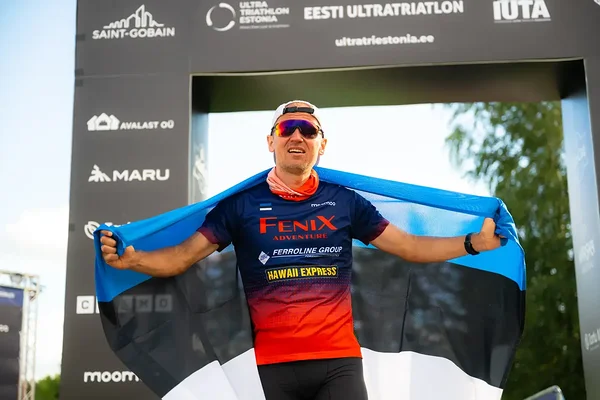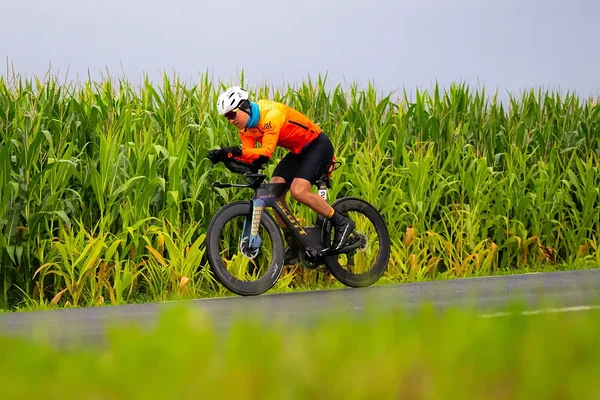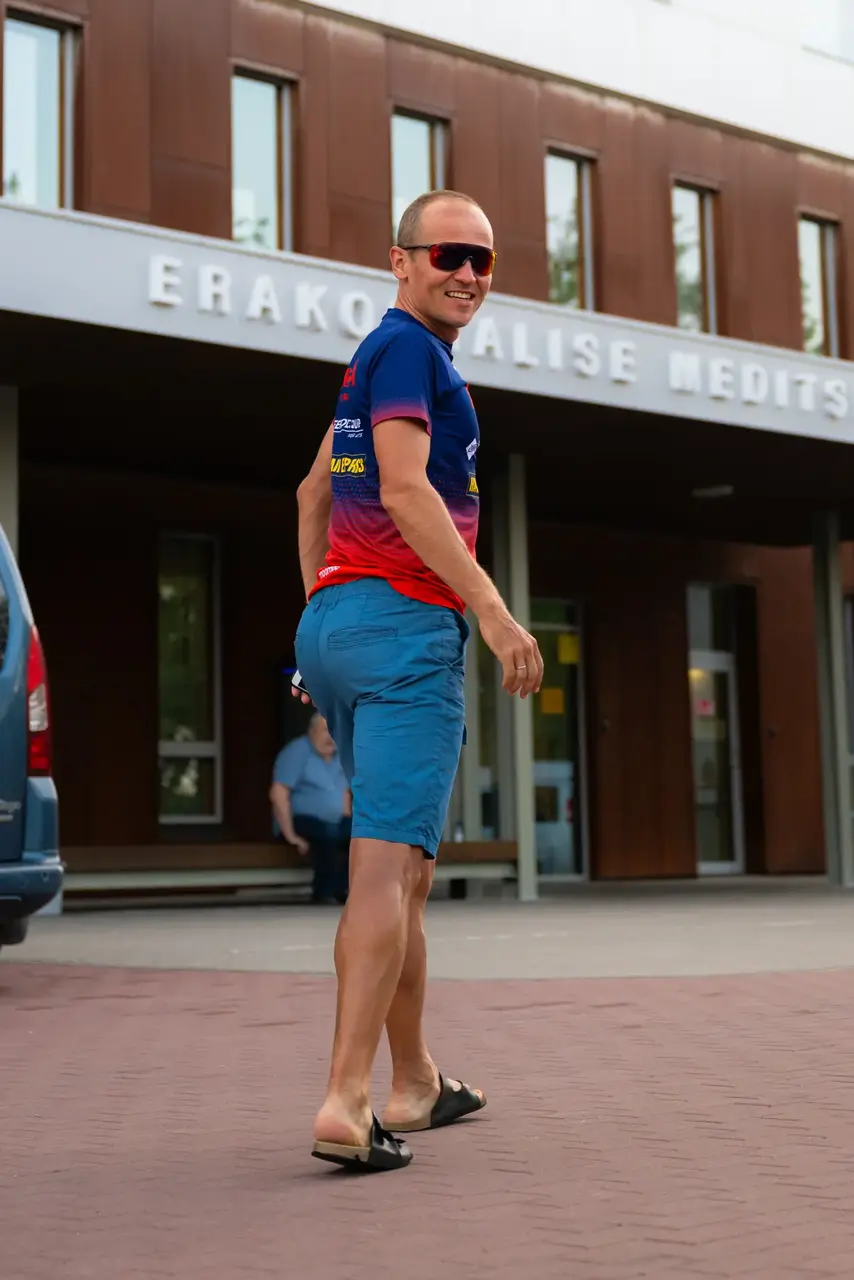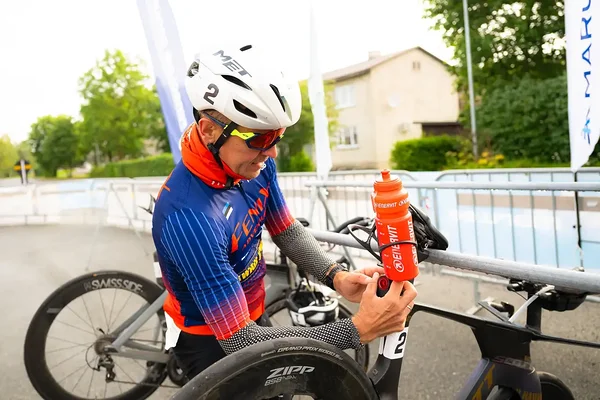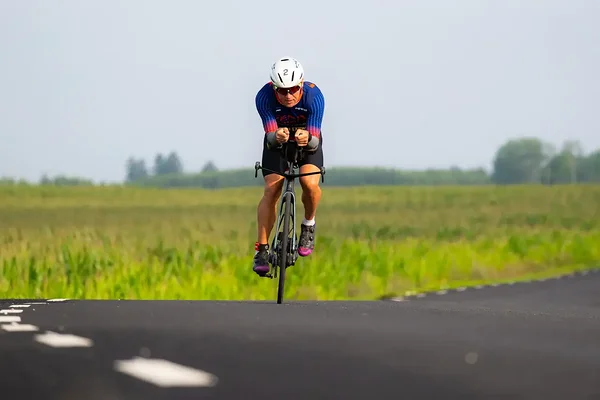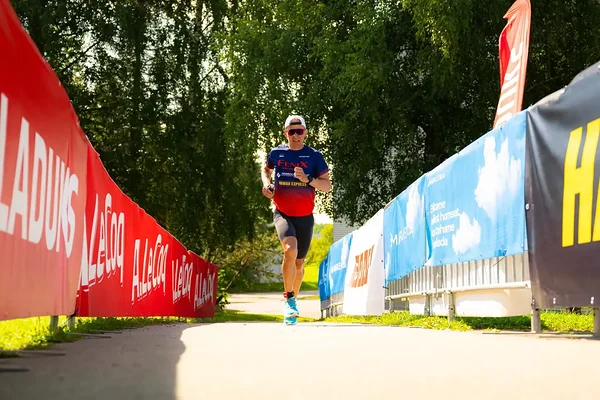From August 2 to August 11, the first Ultra Trithlon Estonia took place, which was also part of the IUTA World Cup series. To participate in the IUTA series, among others three important requirements must be met by race organizer: the racecourse must be officially measured, the timing must be electronic, and all world record setters must undergo a doping test. The Ultra Triathlon Estonia courses were measured by a person with World Athletics/AIMS measurement certification. The cycling course had a lap length of 5847 m, which the athletes had to complete 31 times (181.257 km). The running course had a lap length of 1455.3 meters, which the athletes had to complete 29 times (42.2037 km). Tolknet Race Timing provided the timing service. Both I, who set a deca per day ultra-triathlon world record, and João Rebelo from Portugal, who set a double per day record, were tested by the Estonian Anti-Doping and Sports Ethics Foundation testers according to WADA rules. All test results were in order, meaning negative.
In the table below, you can see how much time I spent each day in the water, on the bike, running, and in the transition zones according to Garmin devices, how much sleep I got at night, and the heart rate and power output I had each day.
Goal
My time goal was to complete one full-length triathlon every day for 10 consecutive days with a total time of under 100 hours. I managed this goal nicely. Ideally, I wanted to be faster than 10 hours every day. For the first 7 days, I succeeded and did my best to keep the times under 10 hours for the last 3 days as well, but this time the times went slightly over. On the eighth day, the finishing time was 10:01:16 - on that day, I forgot to prepare my cycling jersey in the first transition zone, and lost 1.5 minutes retrieving it. Without this mishap, I would have beaten the 10-hour mark on the eighth day as well. However, in such a long race, these kinds of things inevitably happen. Since it wasn’t possible to beat the 10-hour mark on the last two days due to difficult weather conditions, I wasn’t too bothered by the eighth day.
Photo: Jakob Meier
How did this goal come about?
From October 5 to December 3, 2021, I organized a 60-times ultra-triathlon for myself in the tough and hot conditions of Fuerteventura. In other words, I completed one full-length triathlon every day for 60 consecutive days with an average time of 10:57:40. During this endeavor, I realized that breaking the 10-hour barrier daily was doable. The following year, I decided to prove this to myself by participating in the Swiss 5-times ultra-triathlon, where I managed to complete a full-length triathlon every day under 10 hours for 5 consecutive days, with a total time of 49:32:49.
Second Attempt
This was my second attempt – the previous year, I participated in the Swiss 10-times ultra-triathlon and managed to keep up with the under-10-hour pace for the first 4 days, but then Switzerland faced its worst weather in 100 years in August (i.e., 3.5 days of continuous rain and the average daily temperature dropped to around 10 degrees or even lower). After three days in these conditions, I was eventually forced to quit. In Switzerland, I wasn’t equipped for such weather, but this time in Estonia, I was prepared. Although the weather conditions were quite challenging during the last two days of the Estonian event, I was no longer surprised after my experience in Switzerland.
Low Heart Rates Are the Key to My Success
During the Ultra Triathlon Estonia, my heart rates were very low – this is my "secret" to success in ultra-sports – the activity must feel easy for the body, and the body must be able to derive virtually all of its energy from fat processing. For example, my lowest average heart rate on the bike was 102, and while running the marathon, it was 115 (marathon time 3:17:26). However, low heart rates are not a feature of my body, but the result of training. For example, a few years ago during the Tallinn IRONMAN, my average heart rate on the bike was 157 and during the run 155. Or, for instance, while running my marathon record (2:28:52) in Barcelona this spring, my average heart rate was 165.
When There's Little Sleep, the Body Must Learn to Sleep Faster
According to my watch, I slept an average of 5h 20min per day over the 10 days. During the 60-times ultra-triathlon, I averaged 5h 55min of sleep per day. Ideally, I would have gotten a bit more sleep during the Ultra Triathlon Estonia, but the conditions were special – as the organizer of the event, I couldn’t go to rest immediately after finishing the day, but had to deal with organizational issues. Additionally, I became a father during the event and participated in the birth of my child on the 5th day. The birth occurred in the evening, and after finishing on the fifth day around 5 PM, it became clear that if I hurried, I could make it from Vinni to Tartu to witness my son’s birth. Furthermore, I was significantly impacted by the funeral of a very close person, which took place two days before the race started.
Photo: Jakob Meier
During 1810 kilometers pedaled on a bike, 1081 cars passed me
Over 1810 km cycled, 1081 cars passed me. In addition to the fact that my rearview radar on the bike is one of my best and most affordable investments for feeling as safe as possible in traffic, the rearview radar counts the passing cars. During the 10 days, 1081 cars passed me, an average of 108 cars per day. This is not much, considering that during summer training rides between Tartu and Pärnu, an average of 386 cars passed me for every 180 km.
Photo: Jakob MeierHRV as an Indicator of Stress and Recovery Speed
My nightly average HRV during the race dropped to only 62 ms, which is a sign for me that my body wasn’t under excessive stress. For example, at the end of June and the beginning of July, when I was undergoing very tough and extensive training, my nightly average HRV was consistently between 49-53 for two weeks straight.
Examples of Factors Influencing Cycling Performance
It's interesting to observe power metrics during cycling, as they depend on various factors, with one of the biggest influencers being wind direction. A strong headwind and higher power output don’t always mean a faster time. For example, on the first day, I cycled with an average power of 212 watts, and it took me 5:08:40 to cover 181 km. However, my fastest bike time came on the third day (5:04:28), but with significantly less effort (an average of 205 watts). The reason was the wind direction, which was much more favorable on the third day, considering the bike course layout. Meanwhile, from days 6 to 8, the wind blew from the north/east, which was the worst scenario given the course layout, and bike times suffered accordingly. During the race, I repeatedly thought and marveled at how I managed to cope with the relentless winds in Fuerteventura during the 60-times ultra-triathlon. Estonian winds are child’s play compared to Fuerteventura’s. :)
Photo: Jakob MeierThe bike course was fast (i.e., you could take the curves at high speed), but there were still some pumps to tackle. According to the watch, the elevation gain averaged 688 meters over 181 km. This isn’t necessarily a bad thing, though, because if you can stand up for a moment to pedal every few kilometers, it’s a good way to stretch and might even be beneficial in the long run (especially considering the marathon run that follows the bike ride).
To conclude, a few fan facts
Each day, I made an average of 25,500 pedal strokes during the 181 km bike ride and an average of 35,800 steps per day (mostly during the marathon run after the bike ride). To compare, my total step count for a year exceeds 8 million.

